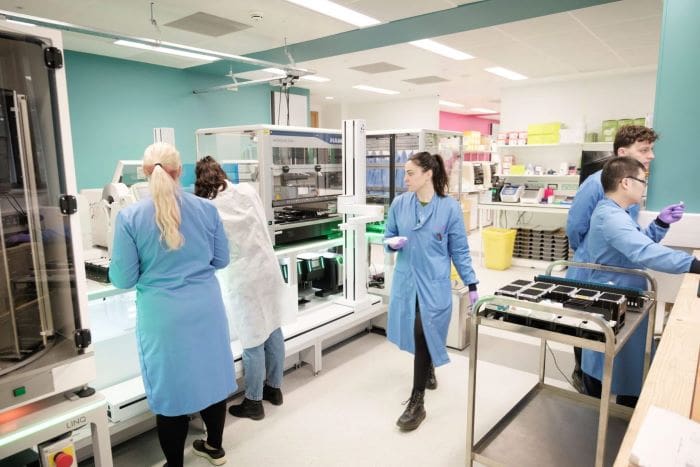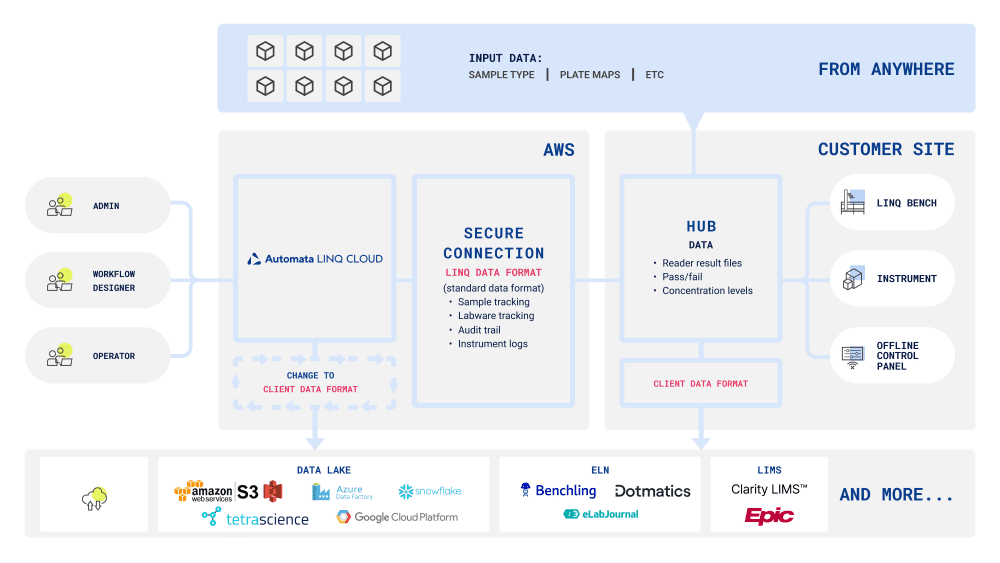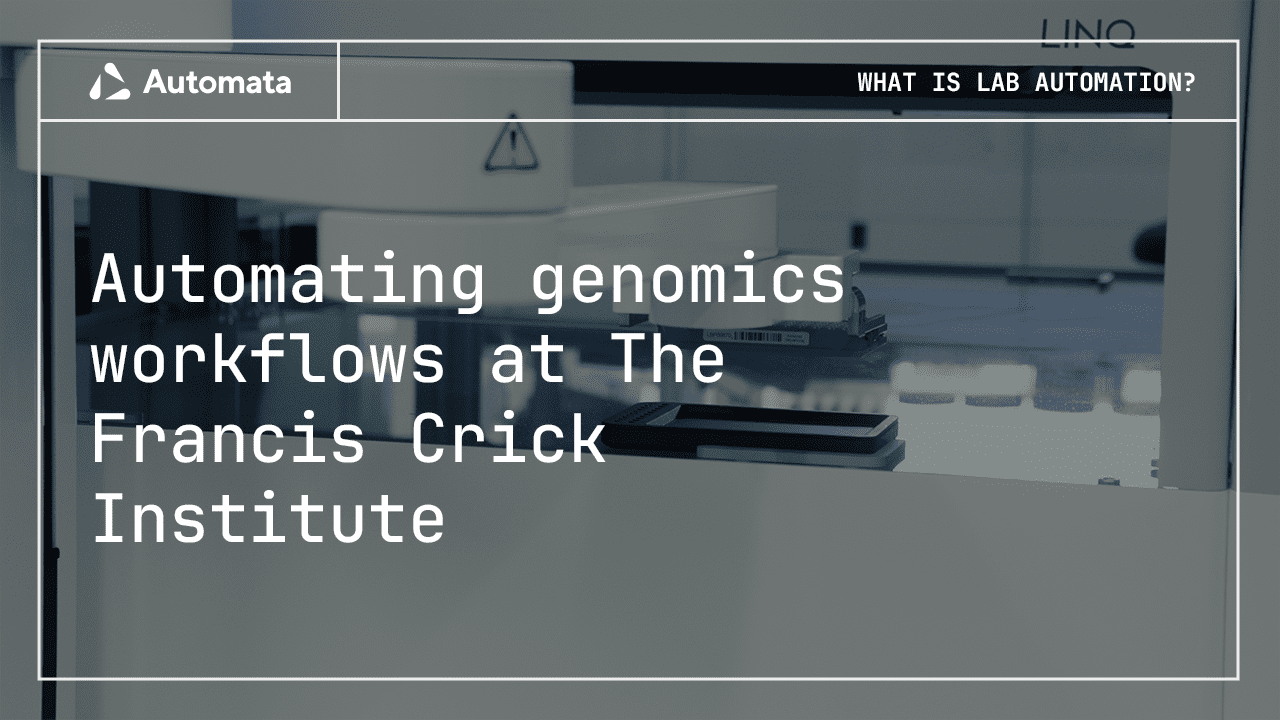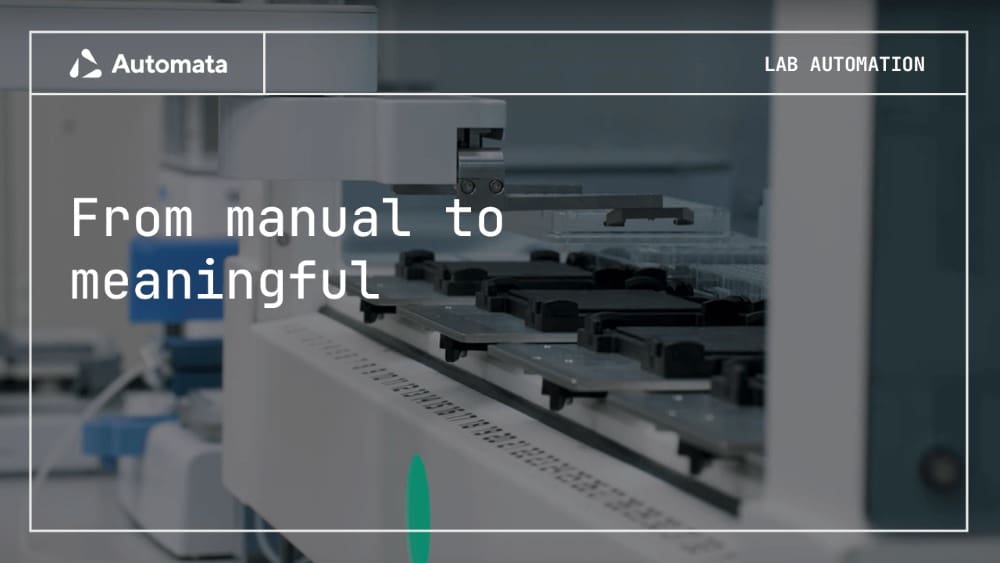In today’s fast-paced scientific research and development environments, efficiency and accuracy are paramount, but both have been restricted by unnecessary barriers like a lack of compatibility and not designing with scientific practice in mind.
Automata is changing the way lab automation platforms are created with something we call ‘Open, Integrated Automation (OIA).
OIA is a design and development principle that promises to revolutionise the way life science labs maximise their potential by ensuring seamless interoperability across various instruments and data systems, making end-to-end, hands-free experimentation possible.
Keep reading to find out what it means for your lab, why such a principle is needed to promote the widespread adoption of automation, and how developing solutions in this way will push the boundaries of what’s possible in genomics and cell biology.
What is Open Integrated Automation?
Open Integrated Automation is an advanced approach to developing lab automation platforms that seeks to tackle interoperability, flexibility, resourcing, and data quality issues found in traditional solutions.
Open
Our platform is ‘open’ in two ways; first, it’s vendor agnostic.
We build solutions that can integrate and automate instrumentation from most vendors so whatever lab tech you want to use, open integration ensures the choice remains yours
This openness extends to our software offering, too. LINQ Coud facilitates the seamless transfer of data from most instruments to any Laboratory Information Management System (LIMS) or data lake.
Putting openness as a concept at the forefront of modern-day lab automation design and development removes restrictions often encountered when using instrumentation and software from individual vendors – some of which were never designed to work with competitor tooling or beyond single tasks – allowing true flexibility and choice.
Secondly, it’s collaborative.
We build human-centric platforms that people in the lab can still control. Instruments can still be used for individual tasks when needed even if they’re part of an automated workflow, and experiments can be easily optimised and adapted for fast iteration cycles.
This level of openness is rarely found in complex automation solutions like those facilitated by LINQ, but we’re proud to say that collaboration between instruments, resources, teams, labs and even globally is easy when nothing is locked down.

By allowing a level of co-working between humans and robotic components, underpinned by safety and built-in process management tools, teams can interact with their automation freely and confidently
Our system is also designed to ensure front-to-back access to maximise bench space and multiply the possible experiments that can be conducted on one LINQ platform.
Integrated
Integration is the most basic requirement for automating processes and is at the core of Automata’s platform, LINQ.
LINQ connects individual benchtop steps together robotically and digitally on a bench and with software, allowing entire workflows to become one seamless, automated process.
This holistic connectivity maximises control over these integrated resources to facilitate the hands-free execution of complex assays and experiments.
Integrating all lab components — at the assay, workflow, facility, or even infrastructure-wide level — creates a harmonious resource environment that increases efficiencies and unlocks a world of experimental possibilities for the people tasked with driving science forwards.
Automation
What is possible with science is increasing day by day, but labs are quickly reaching capacity in some of our most important areas.
They have an abundance of data, new techniques, a shortage of talent and skills, an increasing population and cost considerations to contend with, and we at Automata believe automating processes in the lab with care, consideration and respect for scientific principles is the way to tackle these pressures.
Automating repetitive and complex tasks reduces the likelihood of human error, maintains high-quality and consistent results, and frees up valuable staff resources for more strategic activities; when you extrapolate these gains to a workflow, then lab, then full scientific resource infrastructure, the benefits are easy to see.
Everything we develop at Automata is centralised around the enablement of the automation of ever more complex tasks and true connectivity for global collaboration.
The benefits of Open Integrated Automation
Interoperability

One of the key reasons we develop with OIA principles in mind is to ensure interoperability between different instruments and systems where possible.
Traditional automation solutions are often designed with vendors or specific experiments in mind, meaning switching the purpose or integrations within the automation is difficult or even impossible.
In order to feel the impact of lab automation, we focus on moving labs through the automation journey, from zero or basic, to end-to-end workflow automation, to facility-wide automated experimental activities; repurchasing expensive equipment every time you want to automate something new isn’t practical at a lab output, staff training or even budgetary level.
This is true of the data flow, too; inaccessible drivers and non-standardised data recording prevent the end user from rationalising information for contextual analysis.
The data lake you choose should be dictated by you, and your automation solution should work with it – not the other way around.

Without interoperability between all physical and digital components, lab automation will not deliver what the scientific community needs it to.
Efficiency and accuracy
Automation is at the core of OIA, and reducing human intervention with automation improves both efficiency and accuracy.
Reducing manual handling – be that of samples, labware, reagents or data – minimises errors, enhancing the consistency, reliability and repeatability of results.
Automated operations also do not rely on very human constraints, like the need to eat and sleep. An automated lab will significantly increase active operational time, processes can often be completed much quicker than when done by technicians, and analysis and discovery can be expedited when scientists are freed from menial tasks.
With LINQ Cloud, errors in the automation are highlighted within a remotely-accessed interface, and where possible, the system will troubleshoot to keep the assay on track.
Resource optimisation
By removing human interactions from routine tasks, valuable staff resources can be reallocated to more critical, value-added activities. This not only boosts productivity and allows for more innovative and strategic work to be undertaken, but it also helps tackle the resourcing issue that many labs face.
Throughput can be rapidly and flexibly increased without the need to hire more staff.
Scalability and Flexibility

The open nature of the system means it can easily adapt to new instruments and technologies. This scalability ensures that as new tools and techniques become available, they can be integrated without significant overhauls to the existing setup.
Being built with open integration and modularity in mind means that labs the freedom and flexibility to choose more suitable components as the lab matures and needs change, adding bench components and automating more processes as they like.
Open Integrated Automation represents a significant leap forward in how we manage complex automation goals, and as we continue to embrace this technology, the potential for improved outcomes and innovations in various fields becomes limitless.
Get in touch with Automata to discuss automating your lab, or download our LINQ information document here.






